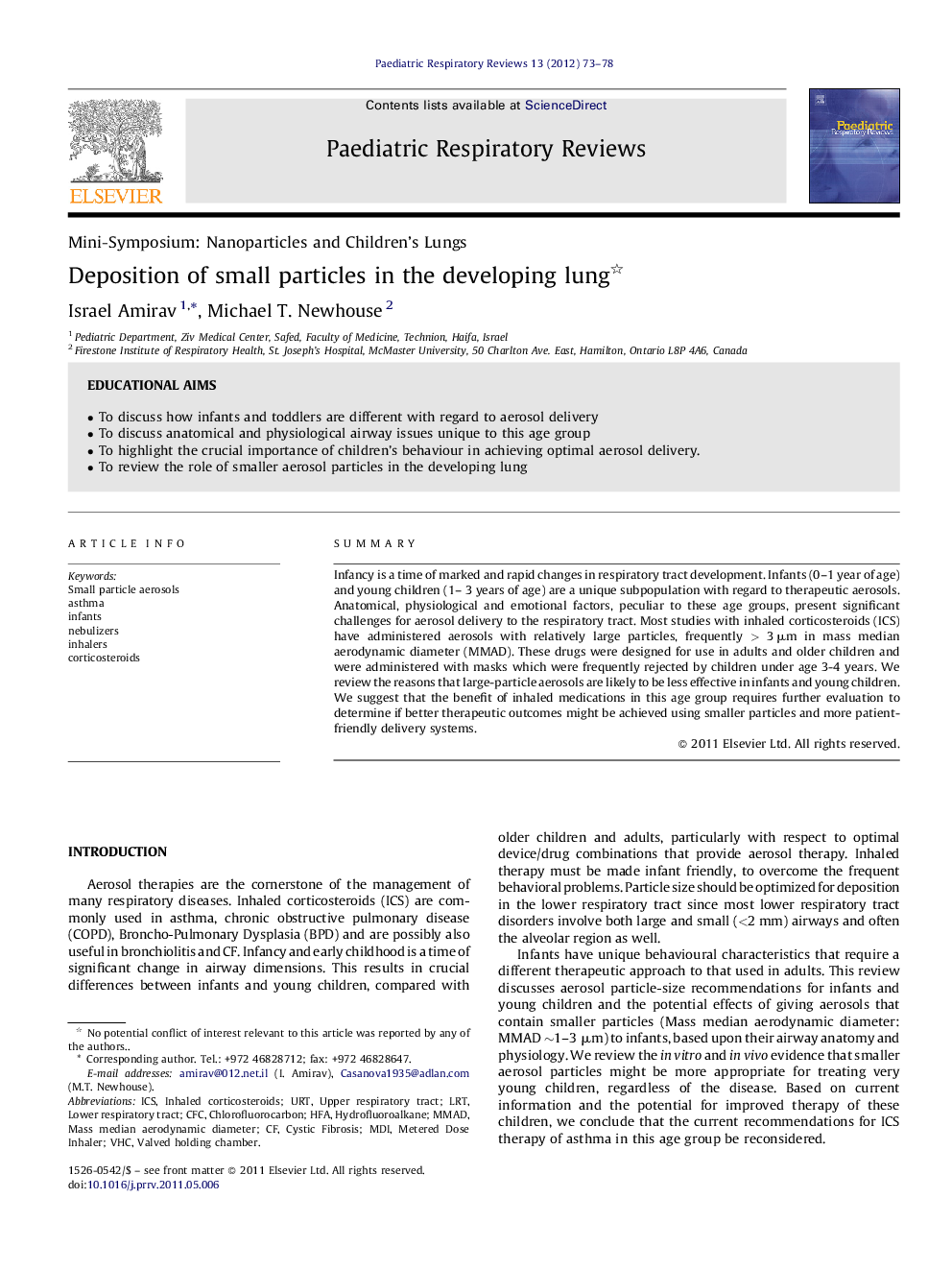| Article ID | Journal | Published Year | Pages | File Type |
|---|---|---|---|---|
| 6225999 | Paediatric Respiratory Reviews | 2012 | 6 Pages |
SummaryInfancy is a time of marked and rapid changes in respiratory tract development. Infants (0-1 year of age) and young children (1- 3 years of age) are a unique subpopulation with regard to therapeutic aerosols. Anatomical, physiological and emotional factors, peculiar to these age groups, present significant challenges for aerosol delivery to the respiratory tract. Most studies with inhaled corticosteroids (ICS) have administered aerosols with relatively large particles, frequently > 3 μm in mass median aerodynamic diameter (MMAD). These drugs were designed for use in adults and older children and were administered with masks which were frequently rejected by children under age 3-4 years. We review the reasons that large-particle aerosols are likely to be less effective in infants and young children. We suggest that the benefit of inhaled medications in this age group requires further evaluation to determine if better therapeutic outcomes might be achieved using smaller particles and more patient-friendly delivery systems.
